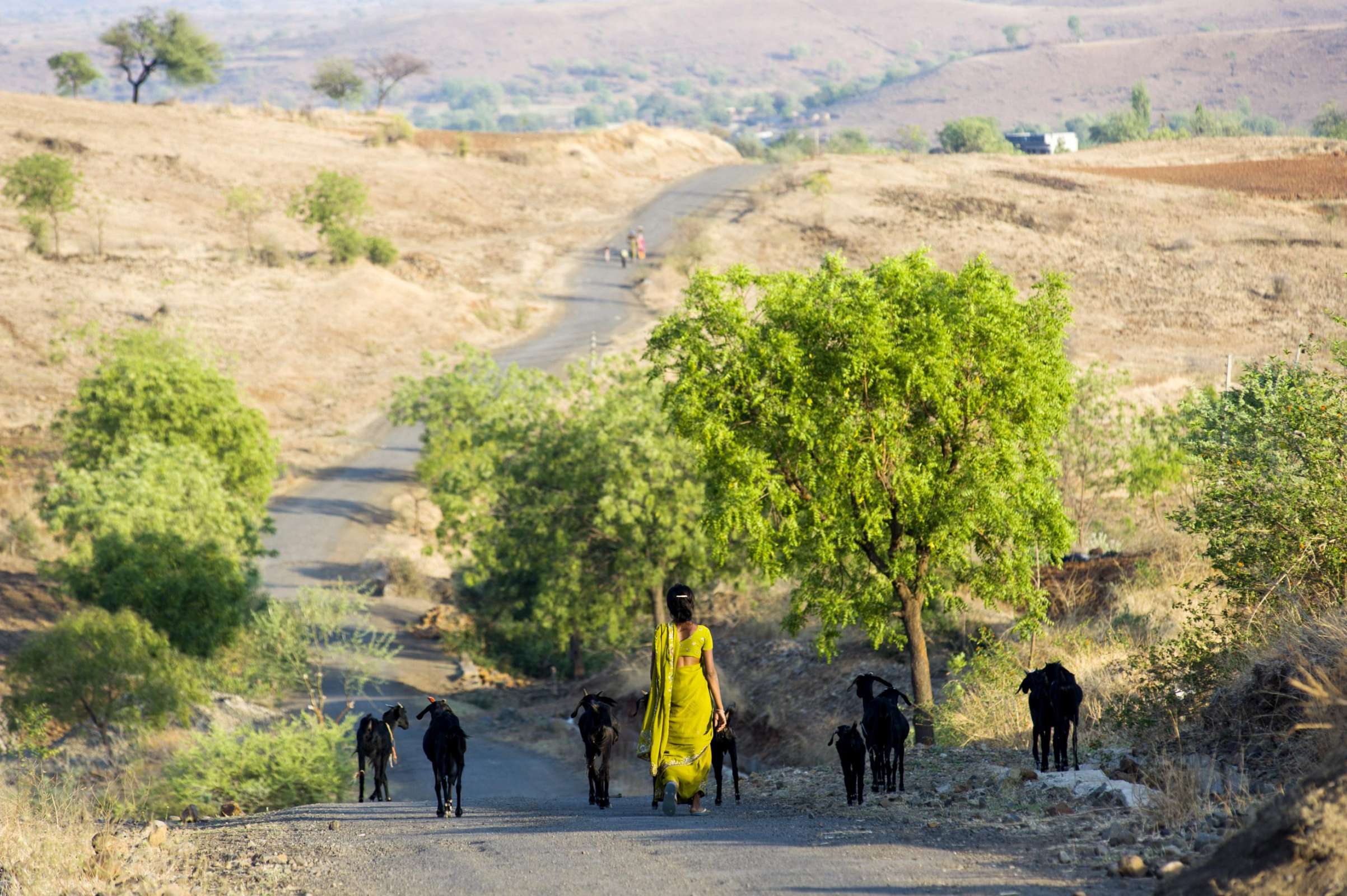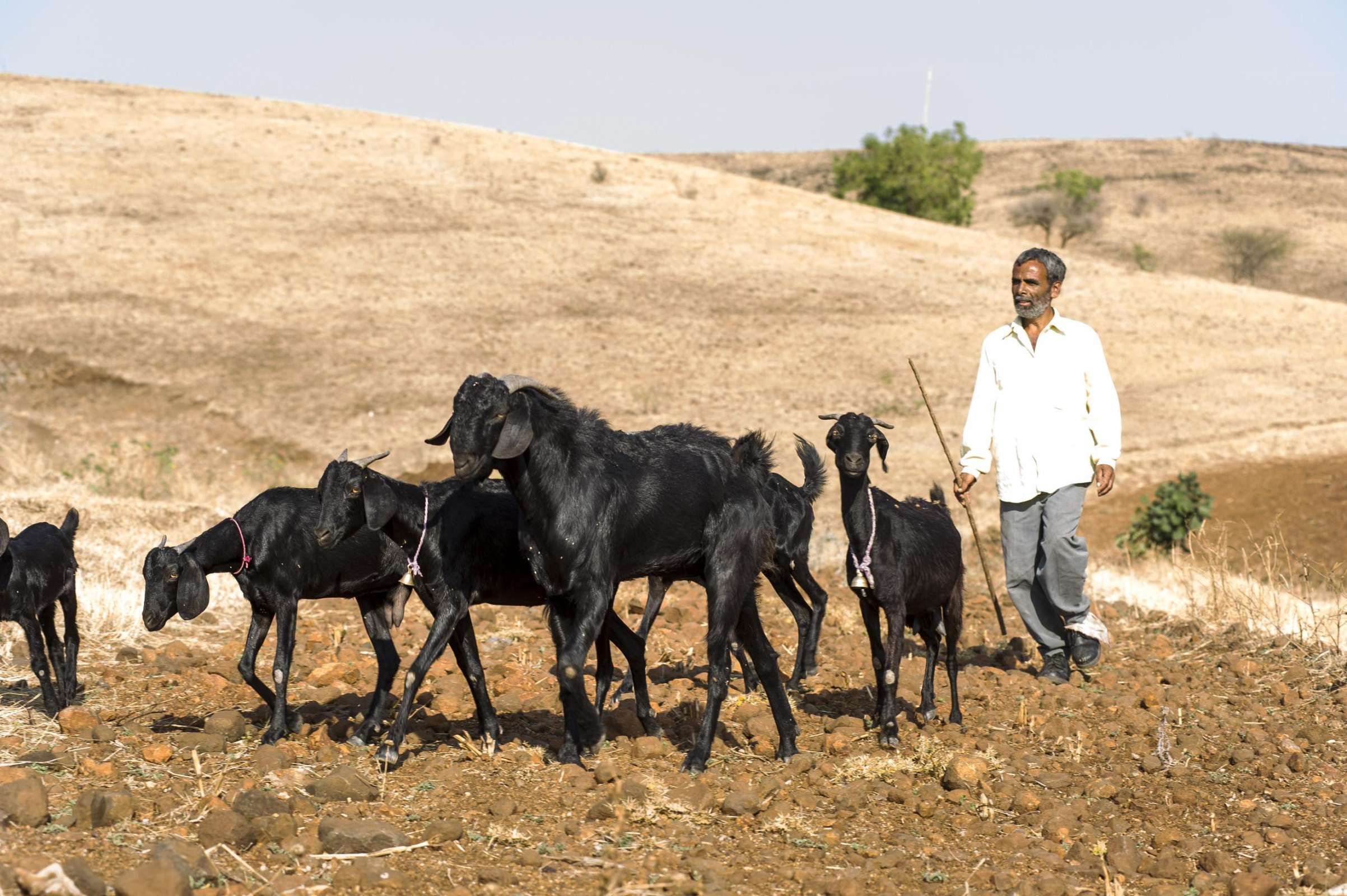Protecting India’s animals to safeguard people’s futures

By Gerardo Huertas, Animals in Disasters Global Director. World Animal Protection
For rural communities in India, protecting animals from disasters is not just a matter of compassion, it is a survival imperative. The estimated 1.2 billion livestock and poultry in India provide vital food items such as milk, meat, and eggs. Buffaloes are also used as draught animals. Their owners depend on them for their income, livelihoods, and companionship.
 (photo credit: World Animal Protection)
(photo credit: World Animal Protection)
Disasters have a significant impact on animals in India
Weather-related disasters cause massive losses of life and property in India. Animals are not spared.
Every year nearly one million cattle are lost to floods through heavy rains. Around 55% of India’s buffaloes, 38% of its cattle, 41% of its goats, and 47% of its pigs are exposed to floods, which regularly devastate farmlands.
At the other extreme, 44% of the country’s livestock live in drought-affected areas.
Cyclones also kill many animals in India. In 1999, 3,205,689 animals (mainly cattle, small animals, and poultry birds) were lost in the Orissa Super Cyclone in Odisha state. The Odisha State government drew the lessons from this terrible disaster as they prepared for 2013’s Cyclone Phailin. They conducted India’s largest evacuation in 23 years – evacuating nearly 1.2 million people and 30,000 animals.
Including animal protection in policies and plans
Protecting animals and safeguarding livelihoods requires proper planning. India is one of the first countries in the world to integrate animals into its national disaster management plans, working closely with World Animal Protection (WPA) to do so. Such plans are central to protecting animals on a large scale. They are also a requirement of the UN’s Sendai Framework.
India’s National Disaster Management Authority (NDMA) and the Department of Animal Husbandry, Dairy and Fisheries (DAHDF) issued these plans in 2016.
- The NDMA plan offers a framework and direction to all government agencies covering all phases of the disaster management cycle. World Animal Protection provided recommendations to NDMA on integrating animal-related components into the plan.
- The DAHDF national disaster management plan specifically spells out how to protect animals before, during, and after disasters. DAHDF is responsible for farm animals/ livestock, poultry, and fisheries and worked closely with WPA technical experts to prepare the plan.
The national policy on disaster management has a dedicated section on animal care in Chapter 7-Response: “Animals both domestic and wild are exposed to the effects of natural and man-made disasters. It is necessary to devise appropriate measures to protect animals and find means to shelter and feed them during disasters and their aftermath, through a community effort, to the extent possible.”
Animals also have a strong place in Indian law, but none specifically requiring their protection during disasters. They are protected in the country’s constitution – quoted above; in The Prevention of Cruelty to Animals Act of 1960 consolidated in 1982, and in The Wildlife Protection Act of 1972.
“It shall be the duty of every citizen of India [...] (g) to protect and improve the natural environment including forests, lakes, rivers, and wildlife, and to have compassion for living creatures…” Constitution of India Section 51 A
Building capacity to protect animals
To support the implementation of these plans, WPA has engaged in several capacity-building initiatives.
WPA trained the National Disaster Response Force (NDRF), a search and rescue force normally dedicated to rescuing people in disaster response operations. More than 250 trainers were trained in all 12 battalions nationwide. The training was organized in six states – North (Himachal Pradesh), South (Tamil Nadu), East (Assam), West (Gujarat), and Central (Bihar and Madhya Pradesh).
With the support of NDMA and World Animal Protection, Veterinary Emergency Response Units (VERU) have been established in veterinary institutions to train veterinary and disaster management workers to protect animals in disasters.
India’s first VERU was founded in Bihar Veterinary College in 2009 following the success of similar WPA initiatives in Thailand, Mexico, and other Latin American countries. Around one million animals have benefitted from the VERUs since 2009.
The current pandemic is not an obstacle for capacity building, our team built a successful online training tool called PrepVet, which is now also being implemented in India to build capacity.
This training is now accessible to all thanks to PrepVet, our online training tool available in Spanish, in English, and Portuguese.
 (photo credit: Simon de Trey-White)
(photo credit: Simon de Trey-White)
Improving disaster loss data collection
To further mitigate the impact of disasters on animals, we need to accurately measure losses. Yes, as of today, there is no data collection system in India to assess a disaster’s impact on animals. WPA is working with the Indian government to address this. Such measures would help fulfill the requirements of the Sendai Framework to quantify the ‘number of people whose livelihoods were disrupted or destroyed attributed to disasters’ [B.5].
Finally, we need to turn plans into action. This remains challenging in the absence of national coordination and dedicated resources. As we celebrate World Food Day, let us not forget that the protection of animals in disasters is critical to strengthen food security and resilient livelihoods.
Costa Rican by birth; studied Marine Biology in Cluj Napoca, Rumania; law and human resources and project management in Costa Rica.
Led disaster relief operation all over the world (Kabul, Pristina, Port au Prince, Colombo, Manila, etc.), working after hurricanes, volcano eruptions, floods, droughts, etc.
Started to work with WSPA (World Society for the Protection of Animals) in early 1982, moving through all the organizational levels up to Regional Director for Latin America and the Caribbean. Moved to Disaster Management Director for LAC in 2010 up to date. (WSPA is now called World Animal Protection).
Gerardo is married with two children.
